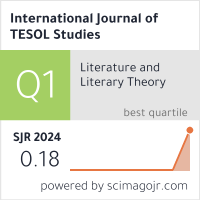2632-6779 (Print)
2633-6898 (Online)


Scopus
Ulrich’s Periodicals Directory (ProQuest)
MLA International Bibliography
MLA Directory of Periodicals
Directory of Open Access Journals (DOAJ)
QOAM (Quality Open Access Market)
British National Bibliography
WAC Clearinghouse Journal Listings
EBSCO Education
ICI Journals Master List
ERIH PLUS
CNKI Scholar
Gale-Cengage
WorldCat
Crossref
Baidu Scholar
British Library
J-Gate
ROAD
BASE
Publons
Google Scholar
Semantic Scholar
ORE Directory
TIRF
China National Center for Philosophy and Social Sciences Documentation
Willy A. Renandya
National Institute of Education, Nanyang Technological University, Singapore
Flora D. Floris
Petra Christian University, Indonesia
Jing Zhou
Defense Language Institute Foreign Language Centre, USA
Abstract
Extensive reading (ER) has long been a foundational construct in second language acquisition (SLA) theory, due to its ability to foster implicit linguistic knowledge and improve fluency. Rooted in the principles of providing learners with abundant, comprehensible, and self-selected input, its implementation has often faced practical challenges related to resources and assessment. This article introduces the key construct of ER in the tech-driven, AI-powered era. Drawing on the seminal work by Day and Bamford (1998) as well as recent research on the primacy of input-based learning, we argue that AI does not render ER obsolete; rather, it offers vast opportunities to scale, personalize, and enhance ER programs. AI-powered tools can address traditional implementation challenges by facilitating content curation, providing adaptive scaffolding, and enabling more efficient monitoring.
Keywords
Extensive reading, artificial intelligence, language teaching, implicit knowledge, comprehensible input